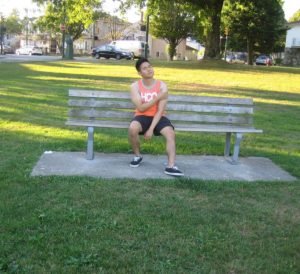The collarbone is one of the major bones comprising the shoulder joint. It is responsible for supporting the shoulder up and together with the scapula and AC joint, provides strength and stability. In addition, it also protects the blood vessels and nerves from the neck up to the shoulder.
What are the causes?
A broken collarbone is typically triggered by a direct blow or contact. This is likely to occur during sports such as wrestling, football or ice hockey.
Remember that the collarbone is one of the commonly fractured bones in the body. Young males at the ages of 13-20 are likely to damage it most often. As for young children, they are at high risk for the injury during play.
Indications

- Abrupt pain after being struck or falls on the collarbone or in the shoulder region
- Difficulty or inability to raise the affected arm due to the pain
- Grinding sensation when attempting to lift the affected arm
The affected shoulder does not always appear out of its alignment. On the other hand, if deformity is evident, it appears as a swelling or bump along the collarbone or at the AC joint. The bone rarely penetrates through the skin but can drive the skin out which causes a tent-shaped appearance.
In most cases, a broken collarbone is not a serious injury. In rare instances, the injury can damage the lung or rib or even pinch the blood vessels or nerves. This can result to the paleness, tingling or numbness of the arm.
Management
A broken collarbone usually heals on its own. If surgery is not indicated, a sling is used to prevent the arm and shoulder from moving as the bone heals. The sling should be used for at least 3-4 weeks. Oftentimes, a figure-8 strap is used.
The individual can start with simple exercises right away and move on to strengthening if pain is not triggered. A doctor can be consulted when it is safe to exercise. If started early, the injury might not properly heal.
For pain control, a non-steroidal anti-inflammatory drug (NSAID) such as ibuprofen or naproxen can be given. For severe damage, surgery might be recommended especially if the bone ends are not lined with each other.
More Information / Disclaimer
The information included on this page on a broken collarbone is for educational purposes only. Learn to recognize and manage fractures including the collarbone by taking a standard first aid course with Saskatoon First Aid.
